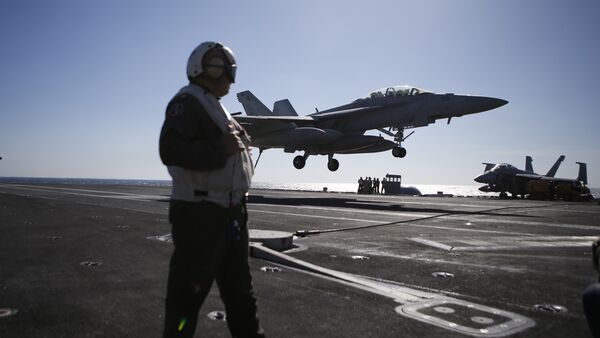WASHINGTON (Sputnik) — Roberts served as US deputy assistant defense secretary for nuclear and missile defense policy from April 2009 to March 2013. In that role, he also served as policy director of the Obama administration’s Nuclear Posture Review.
"Modernizing these systems is a challenge that the country did not face from the end of the Cold War until quite recently — meaning, when the Cold War ended, we had just been through the Reagan defense buildup,” Roberts said on Tuesday.
“There were new nuclear submarines, new nuclear bombers, new ICBMs, new warheads and bombs, a new command-and-control system, and for essentially 30 years we have lived on the coattails of those investments and now the bill has come due.”
"It is not as if the modernization plan is aimed at putting new technical capabilities in the ground that are significant improvements of what is already there, as it is simply a replacement program to ensure that we do not unilaterally disarm as the systems age."
Another imperative for upgrading systems is the ongoing buildup and enhancement of nuclear-armed countries’ arsenals, Roberts asserted.
What would a world without nuclear weapons look like?
"Now there is an interesting question," Roberts said. "Would this be a world in which conventional war would become the norm among major powers?"
He added: "We do not know the answer to that question, but it is certainly historically the case that the advent of the nuclear bomb punctuated the end of centuries of large-scale war among major powers. Now it may be that the pattern of war broke for other reasons, but you cannot prove that hypothesis."
In contrast to the Cold War, nuclear arms play a relatively small but necessary role in the United States’ current defense strategy.
"Nuclear weapons do not play the kind of global roles they played during the Cold War in supporting our military strategy and posture, and they do not play a role in our global power projection," Roberts averred. "But they do play a unique role on preventing nuclear armed states from directly attacking interests of the United States and its allies."



